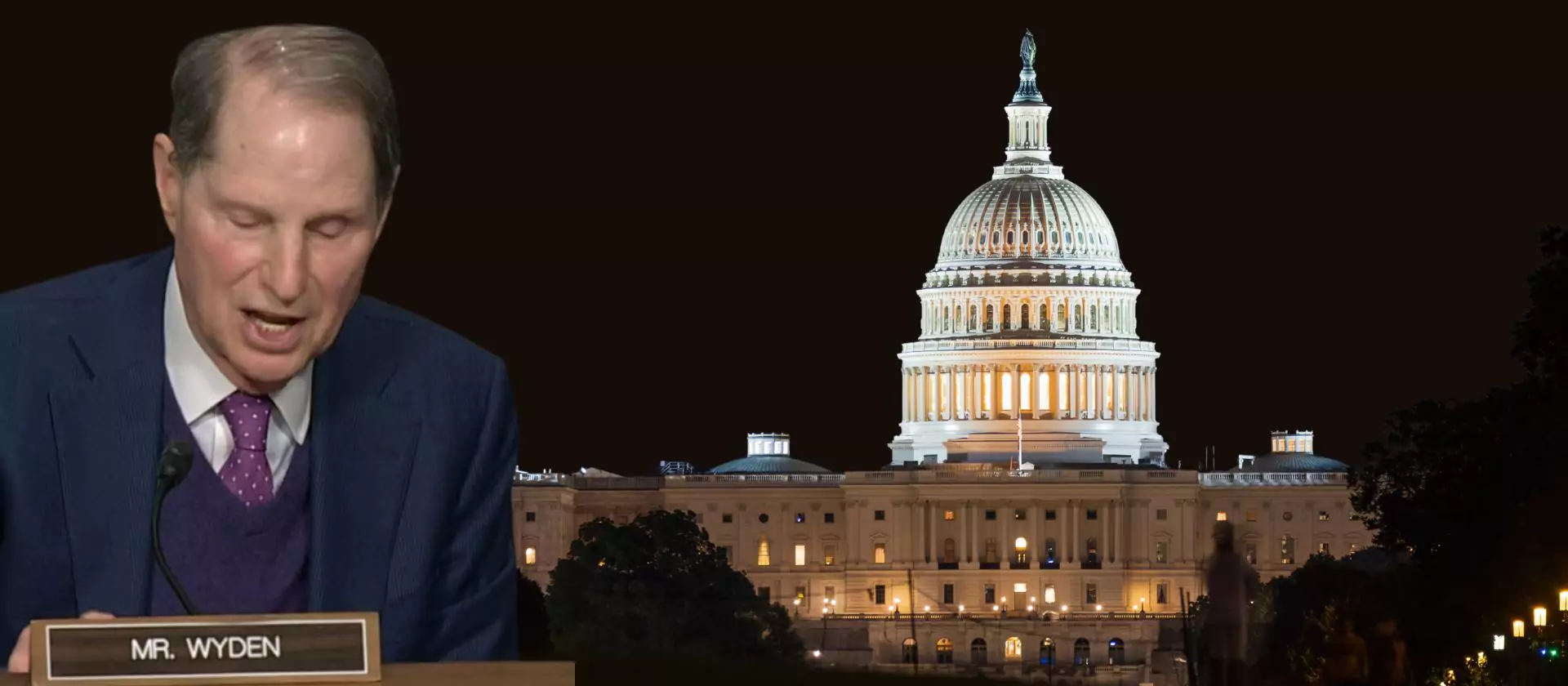This report is also available as a PDF: A Pathway, Not a Cliff
Higher Minimum Wage Increases Economic Security and Self-Sufficiency
Raising Oregon’s minimum wage to $15 per hour would increase the economic security and self-sufficiency of a large number of Oregon families. Opening that pathway to opportunity would be quite an accomplishment by the 2015 Oregon Legislative Assembly.
Some who do not support raising the minimum wage claim that the loss of public benefits by some workers would undermine wage gains. This criticism, called the “benefits cliff” argument, is overblown.
Most public benefits are designed to promote work and self-sufficiency. The benefits phase out gradually as income rises, so that wage gains — be they from working more hours, getting a better paying job or raise, or from a minimum wage increase — leave families better off. In the rare instance when a program doesn’t phase out well, lawmakers can fix the program rules.
Lawmakers should not abandon the opportunity to increase the economic security and self-sufficiency of many working Oregonians because of rare instances of poor program design.
Broad Group of Workers and Children Would Gain from Minimum Wage Raise
Raising Oregon’s minimum wage to $15 per hour by 2018 would benefit more than a half-million Oregon workers and hundreds of thousands of children.
Preliminary estimates show that 589,000 workers would benefit directly from the increase. That is the number of workers whose wages would go up as a result of the legislature lifting the wage floor. Another 114,000 workers would also likely see their wages increase indirectly as employers adjust overall pay ladders.
A $15 per hour minimum wage would also improve the economic circumstances of many Oregon children. About 350,000 children have at least one parent who would see their income rise, directly or indirectly, as a result of increasing the minimum wage to $15 per hour. Many children in single-parent households would benefit. Among all single-parent workers in the state, almost half (47 percent) would experience wage gains directly from the phased increase of the minimum wage.
Raising the minimum wage to $15 per hour would put more dollars in the pockets of lower-income Oregonians. How many more dollars a worker would gain depends on many factors, including the number of hours worked and his or her current wage level. At the high end of the range, Oregonians currently earning the minimum wage of $9.25 and working 35 hours per week would gain $10,465 in yearly income, or $872 per month. The workers’ additional after-tax income would depend on many factors, including family composition.
A higher minimum wage for parents could mean a lifetime of economic benefits for their children. Research shows that every $1,000 in additional yearly family income increases the academic performance of a young, low-income child. An additional $3,000 in yearly income during a child’s early years increases his or her academic performance by the equivalent of two extra months of school and is associated with a 17 percent increase in annual earnings when the child becomes an adult.
Most Public Benefits Gradually Decline as Income Increases, Encouraging Work
Most public benefits that help Oregon families cover basic necessities decline gradually as income rises. Generally, they do not end abruptly. In other words, as detailed in Appendix A, most public benefits have no “cliff” effect. Instead, they are designed to encourage workers to gain more income through work and to achieve self-sufficiency.
Tax credits
Tax credits targeting low-income families — the Earned Income Tax Credit, the Child Tax Credit and Oregon Working Families Child Care Tax Credit — phase out as income increases. While tax credits do not impact a family’s monthly budget since benefits are realized at tax time, on an annual basis workers who benefit from these tax credit programs find themselves better off as they earn more income.
Moreover, because of the way some tax credits are structured, a higher minimum wage could boost the after-tax annual income of some very low-income workers. That is because the tax benefits from the Earned Income Tax Credit and Child Tax Credit increase as earnings rise above the lowest levels, boosting the net income of the workers. At higher levels of income, the benefits begin to phase out. The programs are structured this way to provide an incentive for work.
While a minimum wage of $15 per hour would reduce tax credits for some families, many families would continue to receive some help from these tax programs. The Earned Income Tax Credit, for example, does not phase out completely until annual adjusted gross income reaches over $39,131 for single-parent households with at least one child. Thus, a single-parent working full time earning $15 per hour would still qualify for this credit. The phase-out for the Child Tax Credit begins at much higher income levels — at an annual adjusted gross income level of $75,000 for single filers — and only phases out completely when adjusted gross income reaches $110,000 for joint filers.
Supplemental Nutrition Assistance Program
Another key public benefit program, the Supplemental Nutrition Assistance Program (SNAP, formerly called “food stamps”), also phases out as income rises. SNAP is the nation’s largest anti-hunger program. SNAP is also structured to encourage work. For every additional dollar a SNAP recipient earns, her benefits decline by 24 to 36 cents. Thus, SNAP families are better off with more income from wages.
Subsidized Childcare Has Potholes That Can Be Fixed
Due to past budget cuts, the state’s subsidized childcare program does not phase out as well as it should. For some families in the Employment Related Day Care (ERDC) program, income gains can be canceled out by increased costs to participate in the program. This problem is independent of any minimum wage increase. It exists today for families where a parent has increased earnings from working more hours, from landing a better paying job or from getting a raise. This problem is a “pothole” that the legislature can and should fix.
ERDC provides child care subsidies for some low-income working families. ERDC helps parents enter and stay in the workforce by subsidizing their child care, which typically is a heavy burden on working families. Most of the 8,500 families in ERDC have incomes well below the program’s eligibility limit, 185 percent of the federal poverty level. The subsidy program requires a monthly co-payment from families, and the co-payment increases as family income increases. As currently designed and funded, at some increments the required increase in the co-payment exceeds the increased income.
Compared to the number of Oregonians who would benefit from the minimum wage increase, the number of families in ERDC is small. In any given month the program serves about 8,500 families — a small share of the more than half-a-million workers who would see their wages rise directly as a result of raising the minimum wage to $15 per hour by 2018. Because the legislature has not adequately funded the program, ERDC serves only a fraction of eligible families. Currently, there is a waiting list to get into the program.
A minimum wage of $15 per hour would not make the typical ERDC family ineligible. For those who would become ineligible, other benefits would help offset those losses. The typical ERDC family is a single parent with two children. That family would still qualify for ERDC if the parent worked full time at $15 per hour, because $15 per hour keeps that family under the program’s income limit of 185 percent of the poverty level. Families exceeding the income limit due to a minimum wage increase would receive larger, end-of-year subsidies from federal and state child care tax credits.
A program feature that does negatively affect some ERDC families is that increases in the required co-payment can nullify income gains. The co-payment amount is based on family size and income. As the family earns more income, the co-payment increases.
The co-payment problem exists regardless of whether Oregon raises the minimum wage. A family can face this problem today if a parent manages to add more hours to his or her work schedule, if the parent gets a better paying job or if the parent gets a raise. At some steps in the co-payment schedule, the additional co-payment amount can cancel the wage gains.
That higher co-payments can sometimes erase income gains reflects poor program implementation and inadequate funding by the legislature. The Department of Human Services’ (DHS) program manual states, “The co-pay structure should encourage families to seek higher wages and better jobs. Increased income should not be canceled out by a higher co-pay and the loss of other benefits.” The program’s co-payment schedule set forth in the agency’s rules unfortunately fails to fully follow the agency’s own instructions. This problem stems from agency responses to inadequate funding from the legislature.
The legislature and state agency can fix the ERDC co-payment schedule so that it once again helps families transition to higher income levels. DHS can change the co-payment structure so that income gains are not cancelled out by higher co-payments, as originally intended. A legislative proposal (HB 2015) to allow families to remain eligible for ERDC for a year regardless of changes in their employment status would also help families transition from the program.
Wage Earners Rarely Receive Temporary Cash Assistance
The Affordable Care Act Protects Those Who Lose Medicaid
Before the Affordable Care Act, people who lost Medicaid coverage when their earnings rose above the program’s income limits were left to their own devices. Today, the Affordable Care Act helps people retain health insurance coverage.
As a result of the Affordable Care Act, Oregon’s Medicaid Program — the Oregon Health Plan (OHP) — has higher income limits. OHP now covers adults with incomes up to 138 percent of the federal poverty level. Should a wage raise push some workers above the OHP income limit, those workers would now qualify for generous federal subsidies to purchase health insurance coverage in Oregon’s health insurance exchange if they are not offered affordable coverage at work. The lower the income, the more generous the federal subsidies are.
Children enjoy even greater protection. Children whose families earn up to 305 percent of the federal poverty line qualify for the Oregon Health Plan Healthy Kids program. Children who become ineligible for Healthy Kids due to increased household earnings can qualify for subsidies for insurance coverage through Oregon’s health insurance marketplace for earnings up to 400 percent of the federal poverty level.
The Oregon legislature can and should do more to help working Oregonians transition out of OHP. Some low-income adults who make too much to qualify for OHP may have a difficult time affording health coverage in the exchange, even with the generous federal subsidies. This is a problem that exists whether or not Oregon raises the minimum wage. Fixing it should be a legislative priority.
Oregon Has a Solution at Hand: the Basic Health Program
Conclusion
Higher wages make families better off.
Claims that the loss of public benefits for some workers would cancel out wage gains, the so-called “benefits cliff” argument, are overblown. Benefits in most public programs gradually decline as income increases. Those that don’t phase off gradually have potholes — not cliffs — that need to be fixed regardless of any increase in the minimum wage.
Raising Oregon’s minimum wage to $15 per hour creates a pathway toward economic security and self-sufficiency for a large number of Oregon families who now struggle to make ends meet.
[1] Great Progress for Oregon Workers: Who Would be Affected by Raising the State Minimum Wage to $15 by 2018?, Oregon Center for Public Policy, February 16, 2015.
[2] Ibid.
[3] Ibid.
[4] Chuck Marr, Chye-Ching Huang, and Arloc Sherman, Earned Income Tax Credit Promotes Work, Encourages Children’s Success at School, Research Finds: For Children, Research Indicates that Work, Income, and Health Benefits Extend Into Adulthood, Center on Budget and Policy Priorities, April 2014.
[5] 2015 EITC Income Limits, Maximum Credit Amounts and Tax Law Updates, Internal Revenue Service.
[6] Policy Basics: The Child Tax Credit, Center of Budget and Policy Priorities, December 2014.
[7] Policy Basics: Introduction to the Supplemental Nutrition Assistance Program (SNAP), Center on Budget and Policy Priorities.
[8] Families enrolled in ERDC choose their childcare provider. The Department of Human Services (DHS) pays the provider up to a certain amount based on the number, hours and age of the children in care and the location and type of provider. The DHS payment to the provider is reduced by the co-payment required from the family, which is based on family size and income.
[9] OCPP analysis of DHS data from email correspondence from Rhonda Prodzinski, Department of Human Services, to Tyler Mac Innis, OCPP, February 4, 2015. Between July 2013 and June 2014, about 14,000 families received ERDC. Over the course of a year, families enter and exit the program.
[10] OCPP analysis of DHS data from email correspondence from Rhonda Prodzinski, Department of Human Services, to Tyler Mac Innis, OCPP, February 4, 2015.
[11] OCPP analysis of DHS data from email correspondence from Rhonda Prodzinski, Department of Human Services, to Tyler Mac Innis, OCPP, February 4, 2015. Nearly half of ERDC households (46 percent) have income under the federal poverty level. About 76 have income below 133 percent of the federal poverty level.
[12] If the combined payment from DHS and the family co-payment are not enough to cover the total cost of care, the family pays the remaining amount to the provider.
[13] Oregon Department of Human Services’ Family Services Manual.
[14] Where are States Today? Medicaid and CHIP Eligibility Levels for Adults, Children and Pregnant Women as of January 2015, Kaiser Commission on Medicaid and the Uninsured, February 2015.
[15] Federal premium tax credits for purchase of marketplace plans are provided on a sliding scale based on family size and income.






